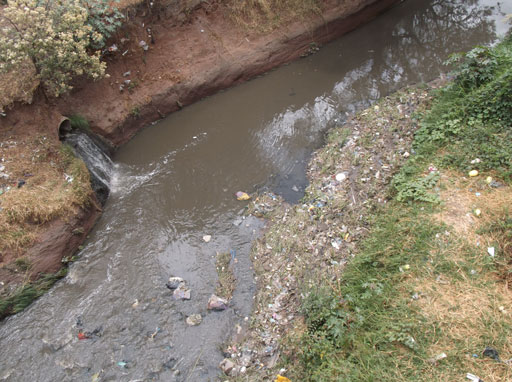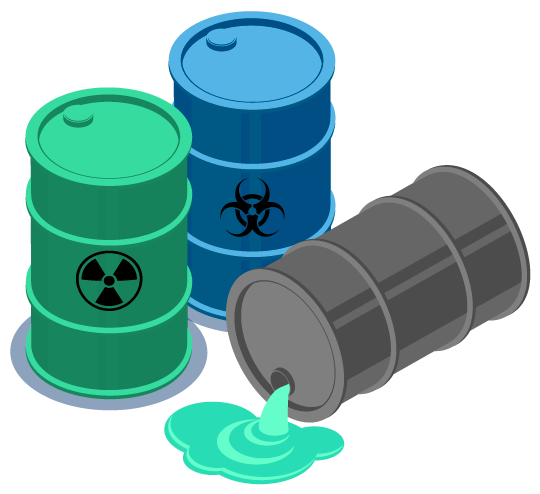Safe and Sustainable Liquid Waste Disposal: Your Go-To Company
Safe and Sustainable Liquid Waste Disposal: Your Go-To Company
Blog Article
Exactly How Fluid Garbage Disposal Works: A Detailed Overview of Strategies and Technologies Employed

Introduction of Fluid Waste Types
The complexity of fluid waste kinds necessitates an extensive understanding of their qualities and effects for disposal. Liquid waste can broadly be classified into numerous types, including commercial, local, agricultural, and contaminated materials. Each category displays unique buildings, calling for certain administration methods to alleviate environmental and health and wellness threats.
Industrial fluid waste stems from making processes and usually consists of an array of contaminants, such as heavy steels, solvents, and organic substances. Local fluid waste, primarily making up wastewater from homes and commercial facilities, has natural issue, nutrients, and microorganisms (industrial wastewater treatment). Agricultural liquid waste, consisting of drainage from ranches, may contain plant foods, pesticides, and animal waste, positioning threats to water quality and ecological communities
Hazardous fluid waste is identified by its toxicity, reactivity, or prospective to trigger injury. Understanding these diverse liquid waste kinds is essential for creating efficient disposal methods and making certain compliance with ecological guidelines.
Physical Therapy Approaches

Testing is the first action, where larger bits and particles are removed from the liquid waste using displays or grates. This process protects downstream devices from damage and guarantees smoother procedure. Complying with screening, sedimentation makes use of gravitational force to separate solids from liquids. In sedimentation containers, much heavier particles clear up near the bottom, developing a sludge layer, while the clarified fluid can be additional treated.
Purification is another essential approach that includes passing the liquid via permeable products, such as sand or membrane layers, to capture smaller particles. This step enhances the quality of the liquid, making it appropriate for subsequent therapy procedures.

Chemical Treatment Methods
Chemical therapy techniques are necessary for effectively handling fluid waste, specifically in addressing liquified and colloidal pollutants that physical approaches may not sufficiently eliminate. These techniques utilize numerous chemical agents to neutralize, speed up, or change hazardous substances right into less unsafe forms.
One usual technique is coagulation and flocculation, where chemicals such as alum or ferric chloride are contributed to advertise the gathering of suspended particles. This procedure improves sedimentation, enabling less complicated elimination of the resulting sludge. Additionally, oxidation procedures, employing agents like chlorine or ozone, are used to damage down complex organic compounds and virus, making the waste safer for discharge or further treatment.
Neutralization is an additional critical strategy, which adjusts the pH of acidic or alkaline waste streams to neutral levels, preventing possible injury to downstream systems and the atmosphere. Furthermore, advanced oxidation processes (AOPs) make use of mixes of oxidants and ultraviolet light to degrade persistent pollutants, accomplishing a greater degree of therapy performance.
Organic Treatment Procedures
Biological therapy procedures play an important role in the management of fluid waste by utilizing microorganisms to break down raw material and reduce pollutant levels. These procedures can be broadly categorized right into aerobic and anaerobic therapies, each using details microbial communities to achieve effective waste destruction.
Aerobic treatment includes the use of oxygen to facilitate the break down of organic materials by microorganisms. This process is frequently implemented in triggered sludge systems, where aeration storage tanks offer a helpful setting for microbial More Info development, leading to the oxidation of organic pollutants. The resultant biomass can be divided from treated effluent through sedimentation.
In comparison, anaerobic therapy happens in the absence of oxygen, relying upon different germs to break down raw material. This method is specifically advantageous for high-strength waste, as it creates biogas, a renewable resource source, while decreasing sludge production. Technologies such as anaerobic digesters are regularly used in industrial and community applications.
Both anaerobic and cardio biological therapies not just decrease the environmental impact of liquid waste yet also help with source recuperation, making them vital components of sustainable waste management approaches. Their versatility, efficiency, and efficiency sustain their extensive Home Page application across various markets.
Emerging Technologies in Disposal
Ingenious approaches to liquid garbage disposal are rapidly advancing, driven by innovations in modern technology and a boosting focus on sustainability. Amongst these arising modern technologies, membrane bioreactors (MBRs) have gotten traction for their capacity to combine biological treatment with membrane filtering, causing top notch effluent that can be reused in different applications. MBRs make it possible for smaller impacts and more effective procedures contrasted to conventional systems.
Another promising growth is making use of anaerobic food digestion integrated with nutrient healing modern technologies, which not just deals with liquid waste yet additionally produces biogas and recoups beneficial nutrients like nitrogen and phosphorus. This twin benefit enhances resource effectiveness and decreases ecological effect.
In addition, progressed oxidation procedures (AOPs) are being taken on for the deterioration of complicated natural contaminants. These methods utilize powerful oxidants and catalysts to damage down contaminants at the molecular level, supplying a very efficient option for tough waste streams.
Additionally, the combination of synthetic knowledge and artificial intelligence in waste monitoring systems is maximizing functional effectiveness and predictive maintenance, causing minimized prices and improved ecological compliance. These innovations show a substantial shift in the direction of more lasting and effective liquid waste disposal practices.
Final Thought
In conclusion, reliable fluid garbage disposal demands a comprehensive understanding of different methods and technologies. The integration of physical, chemical, and biological therapy methods guarantees the reliable administration of varied waste types. Furthermore, the appearance of innovative innovations enhances therapy efficiency and advertises sustainability in waste management methods. By continuously progressing these techniques, it ends up being possible to address the expanding difficulties connected with liquid waste, inevitably adding to ecological protection and resource recovery.
Liquid waste disposal is an essential element of ecological management, requiring a thorough understanding of different techniques and innovations customized view website to different waste types. Liquid waste can broadly be classified right into a number of types, consisting of industrial, community, agricultural, and hazardous waste. Agricultural fluid waste, including drainage from farms, may contain plant foods, pesticides, and animal waste, positioning threats to water top quality and ecological communities.
Different physical therapy approaches play an essential function in handling liquid waste effectively - industrial wastewater treatment.In conclusion, reliable fluid waste disposal necessitates a thorough understanding of various techniques and innovations
Report this page